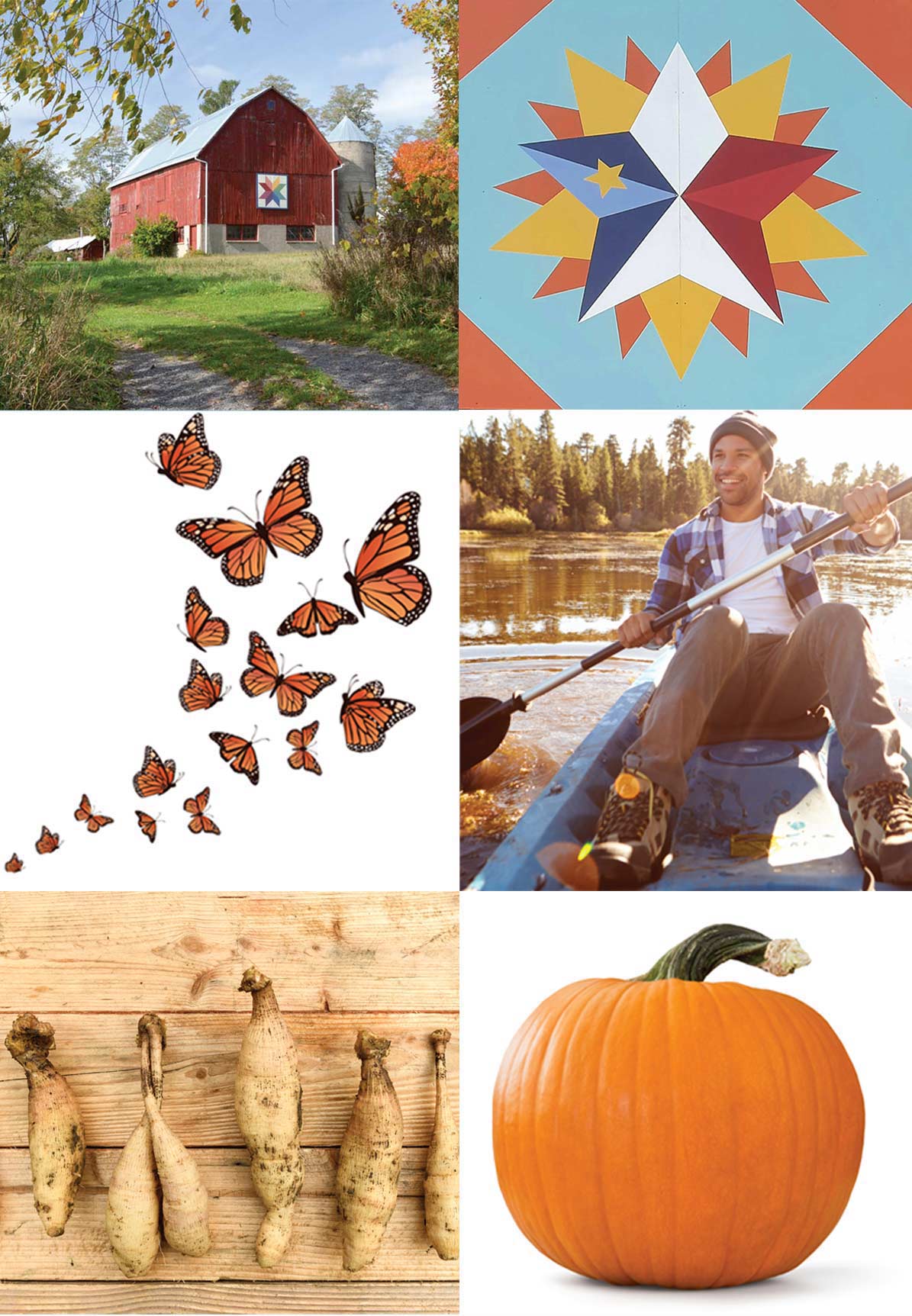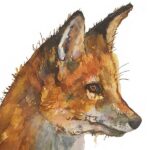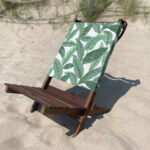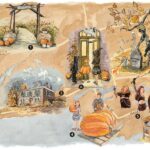
As fall colours begin to fade and golden field crops are harvested, brightly painted geometric patterns set against weathered barn walls stand out on the landscape.
Barn quilts, sometimes described as rural eye candy, are large (usually 8 feet square) painted wood or plywood tiles that depict traditional quilt blocks and pattern designs. They are meant to highlight the narrative of the host farm, its function, and its people.
Ohio resident Donna Sue Groves is believed to have initiated this folk art movement when she decided to replicate one of her mother’s favourite quilt block patterns and hang it on their old barn to brighten it up for winter. It generated so much attention that soon others were approaching her to create similar ones to mark a special family event or a memory. Rural communities across the U.S. began to recognize the power that barn quilts had to market their communities and draw attention to their local histories. It wasn’t long before the barn quilt concept made its way across the border to Canada.
Retired librarian and teacher Pat Dubyk jokingly blames her husband Ron for introducing her to her personal passion project, which began as a few barn quilts created with the help of a small group of dedicated volunteers. That project grew to more than 150 installations across Prince Edward County and ended up creating the Prince Edward County Barn Quilt trail, as well as a subsequent trail in Greater Napanee.
“My husband brought back a brochure of colourful quilt patterns that were painted on barns around London, Ontario. They were beautiful and special because each pattern celebrated something significant about the family and their community. As I learned more about them, attended workshops, and then made my own, I began to think it would be a great way to celebrate and attract attention to our own community,” she recalls.
Multi-coloured crowns, stars, and pinwheels are typical quilt patterns, but Pat has helped barn owners create quilt tiles of their own that included images of sheaves of wheat, cattle, baskets of apples and even swans.
One barn quilt that she helped create with the students at Pinecrest and C.M.L. Snider schools is among her favourites. “We started the project in 2013 with elementary and secondary school students and spent several weeks discussing ideas, drawing the designs and painting the final barn quilt. It was rewarding seeing the kids so engaged. We created a piece of art together that represents them and their school community, and that will hopefully inspire them to participate in future artistic projects.”
She adds, “You’d think that after 150 installations throughout Prince Edward County we would run out of barns; but I still have so much interest for new quilts, and I receive calls from people in other communities who are just starting to discover barn quilts.”
Hanging a barn quilt tile may have started as a way to enliven a dreary barn façade with a splash of colour, but quilts have become a way to celebrate the unique character of our rural communities. For PEC and area barn quilt trails visit: barnquilttrails.ca. To see more of Pat Dubyk’s barn quilts visit: gnabarnquilttrails.ca
Images left to right: This barn is a County landmark owned by Sandy Smith on Mallory Road close to Bloomfield; photograph by Peggy deWitt; Barn Quilt photograph courtesy Pat Dubyk
A Trip Fit for a Monarch
Take up a position at Point Petre or Ostrander Point this fall and watch them prepare to fly away. Try to imagine what they have before them as they stage themselves along the 4,000 acres of undeveloped shoreline at the southern tip of PEC before taking part in what is the only known large-scale butterfly migration on earth.
They must fly nearly 5,000 kilometres to Mexico, arriving – if they are lucky enough and plucky enough – at their overwintering sites in late October (the stragglers may take ’til Christmas). The entire four-stage life of the monarch has led to this critical moment on the shores of the lake. While they are still at the larval stage the caterpillars feed only on milkweed, which is conveniently poisonous to other animals, thus assuring a steady supply.
The milkweed’s chemicals (cardenolides) remain in the butterfly’s body through adulthood, making it nasty-tasting to predators. This larval stage lasts ten days, during which time a caterpillar will shed its skin five times. The pupal stage when the caterpillar inside the chrysalis metamorphoses into a butterfly lasts about two weeks. But there is little time to rest for a mature butterfly.
Migration occurs between mid-August and late September and the flight will take around six weeks. On the way, the butterflies can reach speeds up to 50 kilometres per hour and travel up to 80 kilometres per day – not under their own power of course, but by catching favourable southbound winds along the way. In March the route is reversed – although the return trip takes much longer, and this discrepancy is what defines the lives of the monarchs.
Different generations will take part in different parts of the flight to Mexico and back. The ones who leave PEC will make the whole trip, but the ones coming back may take several generations. For this reason, the lifespan of the southward migrators is about eight to nine months, and they are larger and stronger than their Canada-bound relatives, which will only live for about four weeks, breeding as they move northward.
(It’s probably too much information to reveal that during the mating process, the male pursues the female while they are both soaring blissfully in midair, but actual mating takes place on solid ground. There is a metaphor here somewhere.)
The breed of monarch we watch preparing to leave for Mexico from the north shores of Lake Ontario is sometimes called the “super generation.” It’s easy to see why.
Pumpkin Power
Nothing screams Hallowe’en more than glowing carved pumpkins on the front steps. The Irish tradition for warding off evil spirits generates a lot of leftover pumpkins post-holiday, especially if you are not a fan of roasted pumpkin seeds or pumpkin pie. Lucky for us, some imaginative gardeners have discovered some other uses of maximizing the fruit’s nutrients.
As pumpkins are 90 percent water, if you toss your (unpainted and untreated) pumpkins in your compost instead of throwing them in the garbage, they will start to break down and release that water – which is full of important calcium, beta-carotene, vitamin A and other nutrients – into your compost materials. If your pumpkin isn’t mouldy and is free of paint and other exterior decorations, you can also cut it in half, hollow it out some more, and fill it with seeds for birds and other wildlife.
If you decide to save some of those pumpkin seeds and plant them in a sunny and spacious part of your garden, know that you are supporting a species of squash bee (Peponapis pruinosa) that relies on pumpkin and gourd flowers as the primary source of nectar.
Bears, foxes, raccoons and deer love pumpkins too, so if you are in an area where they are known to visit, hang your pumpkin creations away from your home, or bring them inside at night.
Water Colours
Our hilly countryside is celebrated for its vibrant colour palette in the fall, but for a new perspective this year, try experiencing the autumnal colours in, and around, water.
In Campbellford, the Trent-Severn Waterway is accessible at Lock 8 (Lock Point Road). From there you can follow the same path that Champlain once took on the northwestern shore of Percy Creek, and admire the changing landscape from a canoe or kayak. Cross the suspension bridge over Ranney Gorge to admire the colours on both sides of the river bank.
Presqu’ile Park’s marsh boardwalk (800 metre loop) offers subdued colours, but lots of activity as migratory birds set off, while ducks, hawks and other overwintering birds settle in among the cattails.
For the best of both worlds, take a drive to catch the Glenora Ferry (every half hour), and then enjoy the colourful shoreline views as you cross to Adolphustown.
For peak viewing times visit: ontarioparks.ca/fallcolour
Storing Dahlia Flower Tubers
Dahlia growers are carefully lifting their prized bulbs from their gardens. Here are some tips for successful winter storage: After the plant is lifted from the soil, gently wash the dirt from the plant’s tubers, examine each clump, and discard any rotten ones. Choose a location that won’t dip below freezing, has good air circulation, and has indirect sunlight where the tubers can dry for a few days or weeks. Once dry, you can carefully divide the tubers with a sharp knife, making sure each one has at least one “eye” (little bumps on the skin). Growers differ on the best storage container (paper bags, plastic bins with mulch or vermiculite), but the key step is ensuring they are stored with space between them, in a cool spot that won’t freeze (between 4 and 10 C), and that has good air circulation. For more tips visit: dahlia.org
Story by:
Micol Marotti
Photography by:
Peggy deWiitt




